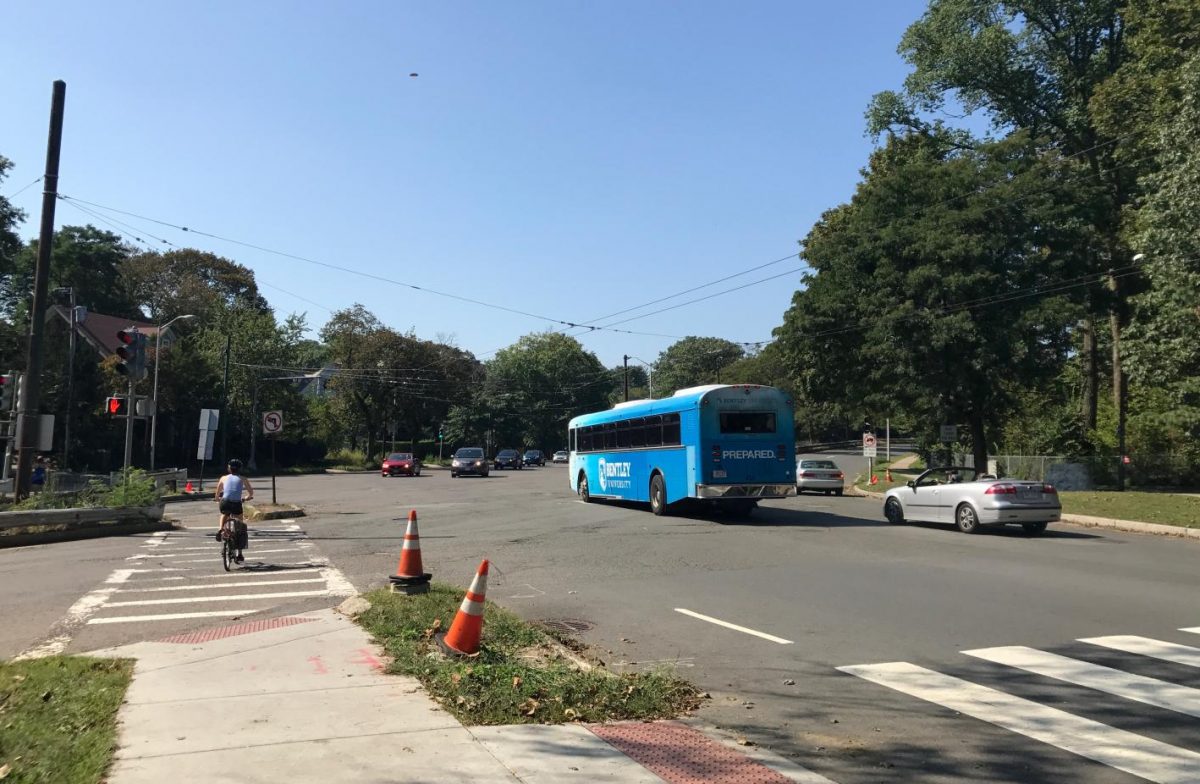City Strives to Improve Mt. Auburn Street Intersection
Pictured: The intersection of Mt. Auburn and Fresh Pond Parkway.
September 28, 2017
At most times of the day, Mount Auburn Street is a relatively free-flowing, quick street to travel on. However, it has a gigantic point of bottleneck where cars, bikes, and buses all clump together in a giant traffic jam every morning: the intersection with Fresh Pond Parkway.
The City of Cambridge and the Department of Conservation and Recreation (DCR) want to fix that.
The intersection of Fresh Pond Parkway and Mount Auburn Street has always been problematic. From drivers making illegal turns to unclear lane markings to harrowing pedestrian crossings, it is no surprise that the crossing has seen 70 crashes from 2011 to 2015—34% of them involved injuries.
Not only is the intersection unsafe, but it is also slow. Long traffic light cycles lead to traffic jams stretching down roads on all sides. This leads to delays and bunching on the 71 and 73 buses, which account for only 3% of the vehicles on the road, but 56% of commuting people.
The city’s plan to offset this is to add bus lanes from Mount Auburn Street to Homer Avenue and from Brattle Street to Coolidge Avenue. This would save at least two minutes for buses and would greatly help with the reliability and timeliness of the 71 and 73 buses.
Bikers lack a bike lane on Mount Auburn Street currently, and for the most part, they are not included in the plan. However, bikers will get special protected bike lanes at some of the busiest intersections of the thoroughfare—Fresh Pond Parkway and Brattle Street—to help them make turns.
Additionally, the city is planning to implement “bike boxes” at other intersections so cyclists can get a head start over cars.
There are other tentative works in the Mount Auburn plan, including new trees, other intersection improvements, and pedestrian plazas at Star Market and Brattle Street.
These are more long-term goals, however. For now, the formation of bus lanes and improvements of the main intersections are the priority. The final planning report for the works will be presented in March 2018, with construction likely to start later that year.
This piece also appears in our September print edition.











